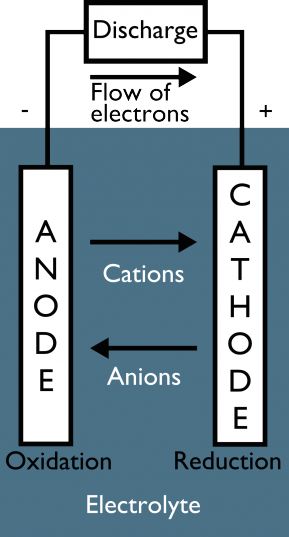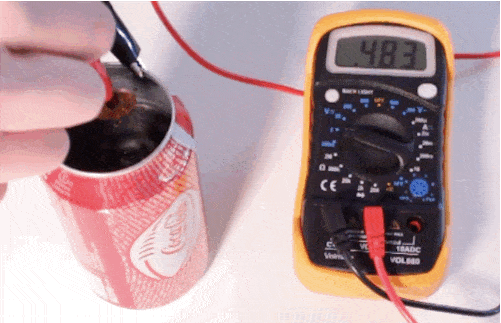Batteries power our world and they’re an excellent example of chemistry and electronics in action. Ready to spark some fun? Learn how to make a battery at home and get those creative juices flowing. We’ll show you how!
A battery stores chemical energy and makes it into electrical energy through reactions that occur at its electrodes. During the electron motion process, electrons flow between the electrodes, enabling them to pump power to devices. An electrolyte solution for a battery helps facilitate a consistent flow of electrons and a salt bridge is the key to balance within a battery, as it connects each half, letting an ion transfer take place—and setting the power into motion.
If you’re eager to watch this process occur right in front of your eyes, read on for step-by-step instructions on how to make it happen. This experiment is just one example of how AstroCamp implements our hands-on science approach. Interested in learning more? Join us for a session!

Materials Needed to Build a Homemade Battery
While there are a few ways you can make a DIY battery, one of the simplest methods involves soda. Here are the materials you’ll need to get started:
- Your favorite can of soda
- A penny
- Wires
- A multimeter
How To Make a Battery: Step-By-Step Instructions
Grab Your Penny and Soda Can
In this experiment, the penny serves as the cathode, and copper is a great choice as it conducts electricity really well. The soda can works as the anode, and the soda itself is your electrolyte solution that ensures flow of ions between electrodes. Together, these items help create the parts of an electrochemical reaction that allow the DIY battery to function!
Buff the Soda Can
This DIY battery experiment is especially easy, because you can do it right inside of the soda can! Simply pour the soda out temporarily and buff the inside of the can with steel wool to get rid of the plastic coating. Then, pour the soda back into the can to get started. This helps ensure that the chemical reaction can occur.
Experiment With Your “Salt Bridge”
Want to try a few different DIY battery methods? Experiment with produce items and non-toxic household liquids to see what works as a salt bridge. If your salt bridge is solid, like a lemon or a potato, just stick in the cathode and anode (your two metals) a small distance apart! When using a liquid electrolyte, like soda, hold your electrodes so that they both contact the liquid without touching each other. Watch the video to see how!
Hook Your Homemade Battery Up
If you can, hook your DIY battery up to a voltmeter, ammeter, or multimeter so you can observe small electric flows, or try connecting several cells in series to light a small LED!
You’re Done!
Now that you have your homemade battery, take some time to check it out and see how the voltage is generated. You can also experiment with other types of sodas and note how the battery reacts under different conditions. Grab your supplies and give it a try!
Keep the Fun Going: Learn How To Make a Potato Battery
Did you enjoy this experiment? Good news! There’s even more fun to be had when it comes to making a homemade battery. Let’s explore how to make a potato battery.
- Step 1: Gather two potatoes, a penny, a nail, wires, and a small light bulb
- Step 2: Put the coin in one potato and the nail in the other
- Step 3: Connect the penny to the nail using wires
- Step 4: Connect the wires to the light bulb
- Step 5: Watch the light bulb turn on!
If you want to learn more about how to make a battery, check out our blog post on DIY Soda Batteries for details. Plus, be sure to explore all of the DIY battery-making methods to see which one is your favorite.
More Science Activities for Kids at AstroCamp

Learning how to make a battery is a great way to discover more about electricity and chemistry. It’s also easy—and fun! Try it at home to practice a bit of problem solving and explore the wonders of science. Interested in more awesome hands-on experiments? Check out all of the exciting and educational activities your child can explore at our overnight summer camp.
